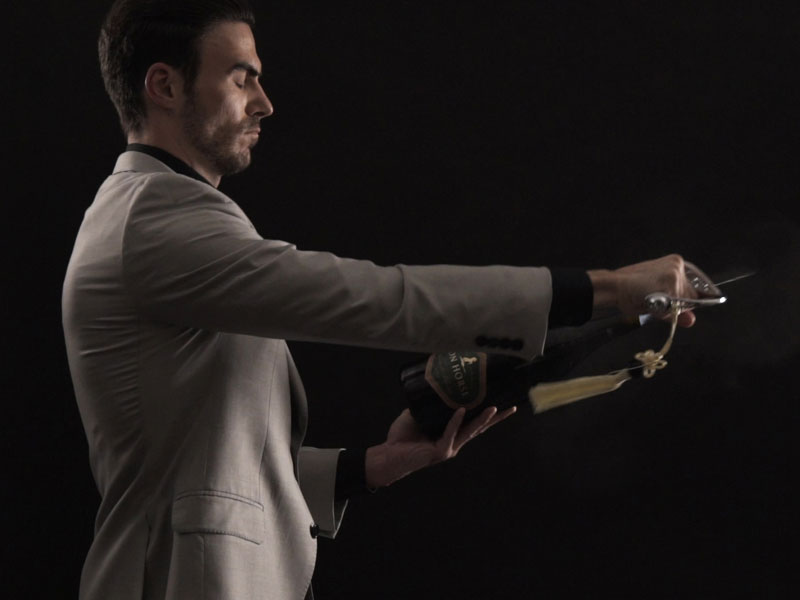What’s better than the sound of a cork popping off the top of a champagne bottle? How about the commanding slash of a sword cracking across the bottle’s neck, overpowered only by the breathless applause of your thoroughly impressed party guests? When it comes to adding excitement, adventure (and yeah, a bit of danger) to that after-dinner toast, sabrage - the method of removing a champagne cork with a saber - is sure to impress.
How to achieve this epic move? Check out our tips:
To ensure that internal pressure is minimized, make sure the bottle is well-chilled, and avoid excessive agitation whenever possible
Hold the saber in your dominant hand
Cradle the bottle in your other hand at an angle of 20 degrees, with the seam of the bottle facing upwards - this is the runway that the blade will swiftly glide over
Remove the foil and the wire hood, and keep your thumb on top of the cork until you’re ready to go
Use the dull end of the blade - sabrage is not about sharpness, but the impact made upon contact
Watch where you're aiming, and execute with a quick, straight motion
Sabrage sort of feels like beheading your worst enemy - not only will the cork fly away from the bottle, but a shard of the neck will accompany it, so watch for jagged edges. And few moments are more satisfying than returning the bottle to an upright position, ready for pouring, as foam spills over the top and your guests lose their minds.
So there’s definitely an art to sabrage. But what’s the science behind it? Champagne is of course under a tremendous amount of pressure inside the bottle. At the bottle opening is the lip that creates a point of stress. The bottle seam is another stress point, and it’s the place where these two points meet that the bottle strength is significantly compromised. This is the exact place that the blade of the saber will strike. At the point of impact, a crack ricochets through the glass and that combined with the contents under extreme pressure sends the top of the bottle flying.
Different stories persist about the origins of sabrage, but most of them hail from the birthplace of champagne itself: France. The saber was the weapon of choice among Napoleon’s cavalry during the French Revolution, and soldiers took to sabering champagne bottles when celebrating a battle victory was in order. A related but less verified story has Napoleon’s soldiers spending time on the property of Madame Clicquot, heiress to the Veuve Clicquot fortune, opening bottles with their sabers to win her over.
Even though you probably won’t be performing your own act of sabrage in front of a wealthy French heiress (we wouldn’t be mad, though) we won’t tell anyone if you get a few cheap bottles to practice on ahead of time. This method works on natural cork and synthetic stoppers too, so go for it.
Despite its complex appearance, this ultimate party trick can also be achieved with a butter knife, or even a spoon. It’s all about precision and momentum, no matter the instrument. But hey, if you’re making a move as big as this, stick with the king-size blade for maximum impact.

